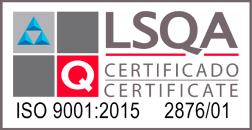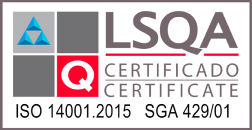The recently published Chile Mining 2024 report highlights a crucial moment for mining in Chile, a country that remains the world’s largest copper producer and the second-largest producer of lithium. In 2024, copper has taken a leading role, reaching historic highs, which has generated renewed enthusiasm in the Chilean mining sector.
This year marks the beginning of a “mining renewal” in the country, with the first increase in copper production since 2018, driven by key projects such as the expansion of Codelco and the start-up of Teck Resources’ Quebrada Blanca II, the expansion of Minera Centinela by Antofagasta Minerals, and the expansion of Los Bronces by Anglo American. Additionally, significant regulatory reforms have been implemented, modernizing the sector’s legal framework and significantly shortening permit processing times, which favors growth and investment.
However, the industry faces significant challenges due to dust pollution, SO2, and climate change, including droughts, abnormal rainfall, and cold spells that have intermittently affected mining operations. Despite these challenges, Chilean miners have demonstrated resilience, adopting technological and innovative solutions to overcome these obstacles.
This report, based on more than 150 interviews with industry leaders, provides a comprehensive view of the future transformations and opportunities in Chilean mining, positioning the country as a leader in the transition to a global green economy.
For more details, you can consult the full report on the official website.
A summary of the management and control of dust, carbon footprint and carbon neutrality, water footprint, and water management from the Chile Mining 2024 report is presented here.
Dust Management in Mining Operations
Dust management is a significant challenge in Chile’s mining industry, especially in large-scale open-pit mining operations. The environmental and health impacts associated with dust require the implementation of advanced mitigation, monitoring, and forecasting measures. Companies are investing in technologies to manage and reduce dust emissions, such as water recirculation systems, dust suppression techniques, the use of dust-resistant materials in infrastructure projects and forecasting tools with artificial intelligence. These measures not only help comply with environmental regulations but also maintain good relations with surrounding communities, which are often affected by dust pollution.
Carbon Footprint and Carbon Neutrality
Chile’s mining sector is actively committed to carbon neutrality as part of its dedication to environmental sustainability. The country’s mining companies are implementing various strategies to reduce their carbon footprint, including the adoption of renewable energy sources, the electrification of mining operations, and emission offset strategies. For example, companies are increasingly replacing diesel-powered machinery with electric alternatives, which significantly reduces greenhouse gas emissions. The use of renewable energy, particularly solar and wind power, is becoming more common, with the goal of achieving carbon neutrality by 2050. This shift is supported by Chile’s favorable regulatory environment and its ambitious climate goals.
Carbon Neutrality Initiatives
Chilean mining companies are aligning with global efforts to combat climate change by setting ambitious carbon neutrality targets. This involves significant investments in green technologies, including carbon capture and storage (CCS), such as “Blue Carbon,” the use of hydrogen as a fuel alternative, and the development of low-carbon mining processes. These initiatives are crucial for meeting international climate commitments and maintaining Chile’s position as a leader in sustainable mining practices.
Water Footprint and Water Management
Water scarcity is a critical issue for the mining industry in Chile, especially in the arid regions of the north and center of the country. The industry is responding by investing in desalination plants and water recirculation systems to reduce reliance on freshwater sources. Desalination has become a vital solution, with numerous projects underway to provide the necessary water for mining operations. Additionally, companies are optimizing water use within their processes to minimize waste and ensure compliance with environmental standards, such as the water footprint. This approach not only helps conserve water but also reduces operational costs and enhances sustainability.
This report provides a comprehensive overview of the main environmental challenges and responses in Chile’s mining sector, highlighting the industry’s commitment to sustainability and the innovative solutions being implemented to address these challenges.











